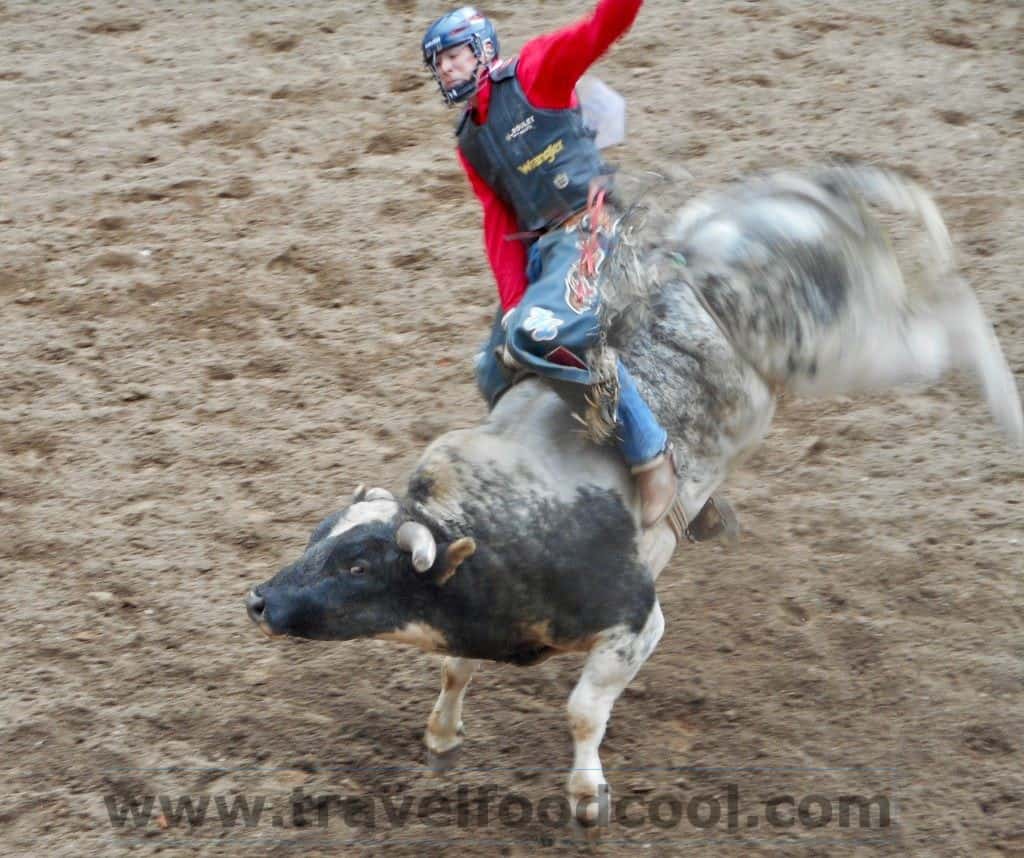
Ladies and gentlemen, hold on to your hats because tomorrow is the start of “The Greatest Outdoor Show on Earth”! It’s the Calgary Stampede! Stampede starts every year on the Friday following Canada Day (July 1) and has been held continuously since 1912! For 10 days, you can release your inner cowboy and/or cowgirl, put on your boots, dust off your hat and yell “YAHOO”!
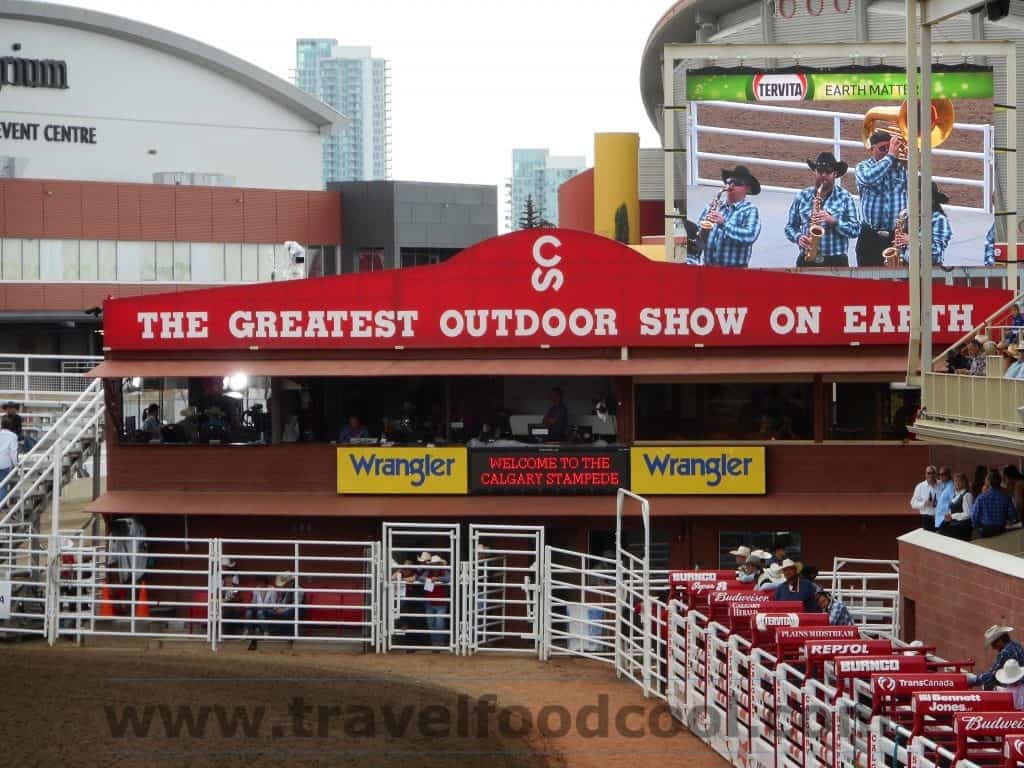
The Calgary District Agricultural Society first held an exhibition in 1886 to share information about agricultural practices, have some fun and showcase the “best of the west”. At the time, Calgary had roughly 1,000 residents. Fast forward to 2017 when roughly 1.4 million people call Calgary home and the Calgary Stampede attracts over 1.2 million visitors!
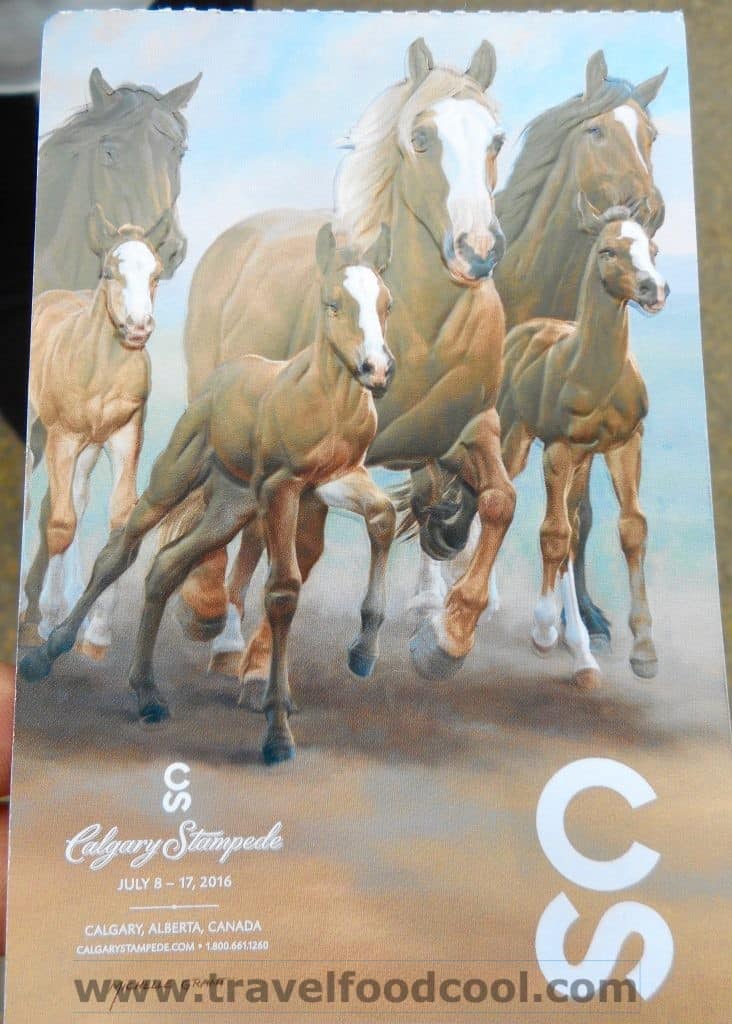
Although Stampede starts on a Saturday, the kickoff is the Friday parade (this year on July 8). How seriously do they take Stampede in Calgary? Most offices are closed on Friday to let people watch the parade (and as a result of parade road closures). The rodeo events run from the 8th to 16th of July. There are events both during the day and in the evening.
The show kicks off with the Grand Entry and the arrival of the Stampede Royalty: the Stampede Princesses and the Indian Princess. Look for the RCMP Musical Ride (the same picture which used to grace the back of the Canadian $50 bill).
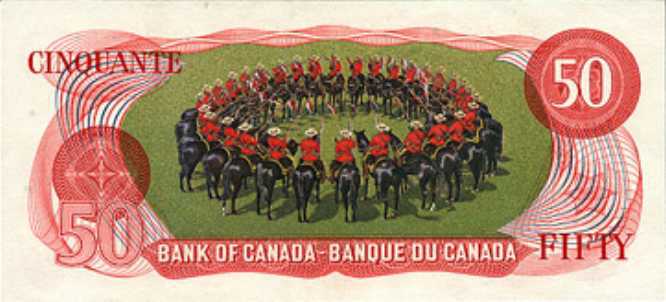
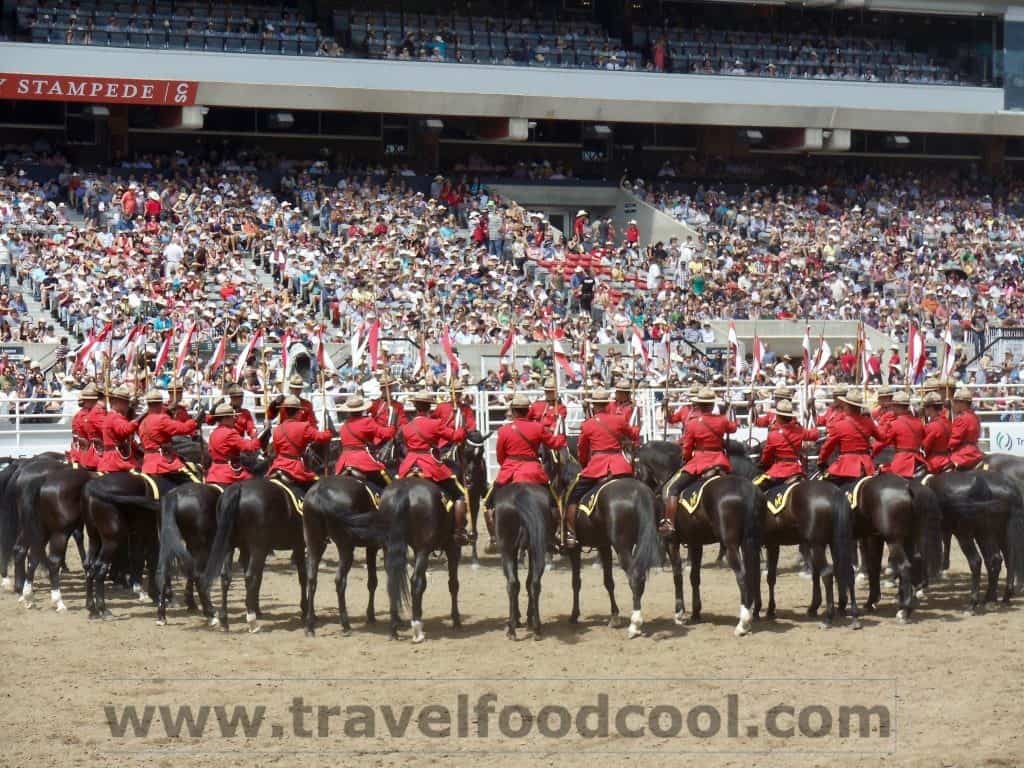
The rodeo that takes place in the afternoon includes the Novice Saddle Bronco, Novice Bareback Championship, Tie-Down Roping Championship, Junior Steer Riding, Steer Wrestling, Bareback Riding, Barrel Racing, Saddle Bronco Championship and Bull Riding. There is also a bonus: everyone’s favourite, the Wild Pony Race.
A little description of some of the events and a few videos for your amusement.
Tie-Down Roping: The cowboy and his “equine partner” take part in one of the oldest tasks in ranching: roping and tying an animal. The calf is given a 10-foot head start when it is released from the chute. The cowboy, using speed and agility, has to rope the calf, jump off his horse, run to the calf, turn the calf on its side and tie three of its legs. While this is going on, the horse has to make sure that the rope is tight, or the calf will escape. The clock stops when the cowboy throws his arms up in the air! (I admit, I always cheer for the calf to escape at this event – you can hear me screaming for the calf in the video below!)
Steer Wresting: This is a two-man team vs the clock. The steer wrestler starts behind a rope barrier. This time the steer gets a 12-foot start when it is released from the chute. The cowboy must chase the steer, drop from the horse and “grab the bull by the horns” (the steer has to be standing before it can be rolled) and roll the steer to the ground. Time is called when all the steer’s legs are in the air. Why is it a two-man team? The extra cowboy (called a hazer) and horse are required to make sure that the steer runs straight.
Bareback Riding: As the name implies, the rider is saddleless and holds onto the bronco (horse) by the leather handhold of the padded rigging which is wrapped around the horse’s stomach. Feet extended out, he spurs the horse towards the rigging. The closer to the rigging, the higher the score. The cowboy has to hold on for at least 8 seconds. (Once 8 seconds are up, to stop the horse, a separate team rides out and removes the padded rigging.)
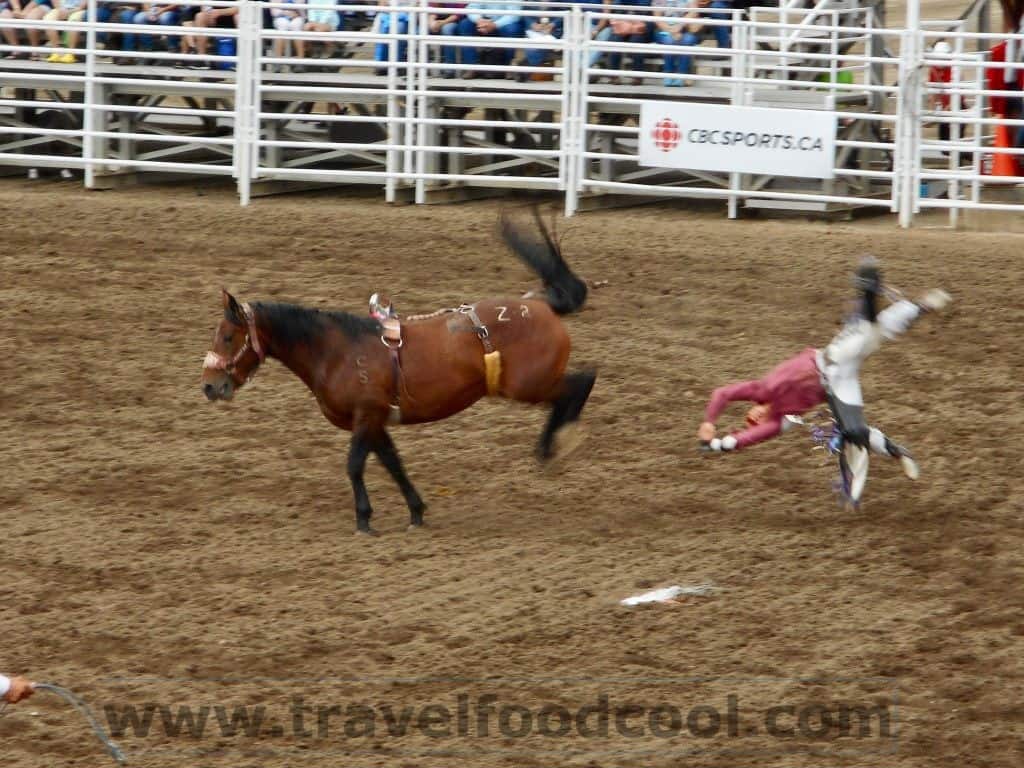
Saddle Bronco: “The rider moves his feet from the horse’s neck toward the back of the saddle, in time with the bronc’s action. The cowboy holds on to a braided rein that is connected to the horse’s halter, using it to balance himself. He cannot change hands on the rein. If his hand placement is too low on the rein, he will be pulled over the front, too high and he may be bucked off”. This event is all about rhythm and making sure you stay on for at least 8 seconds.
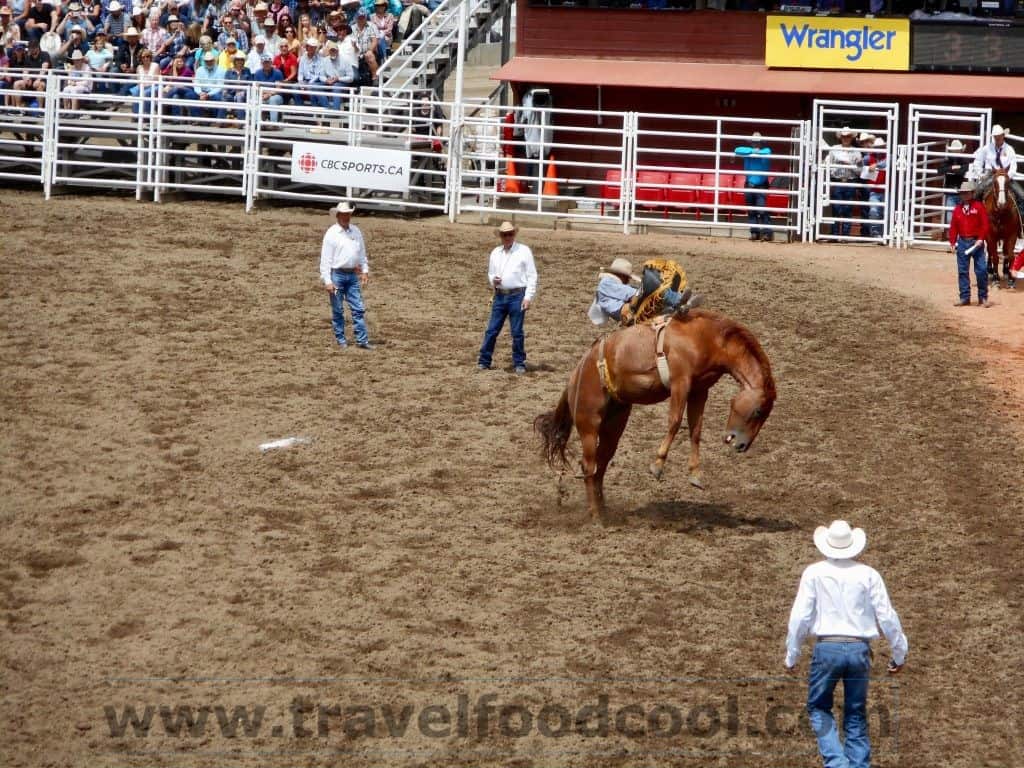
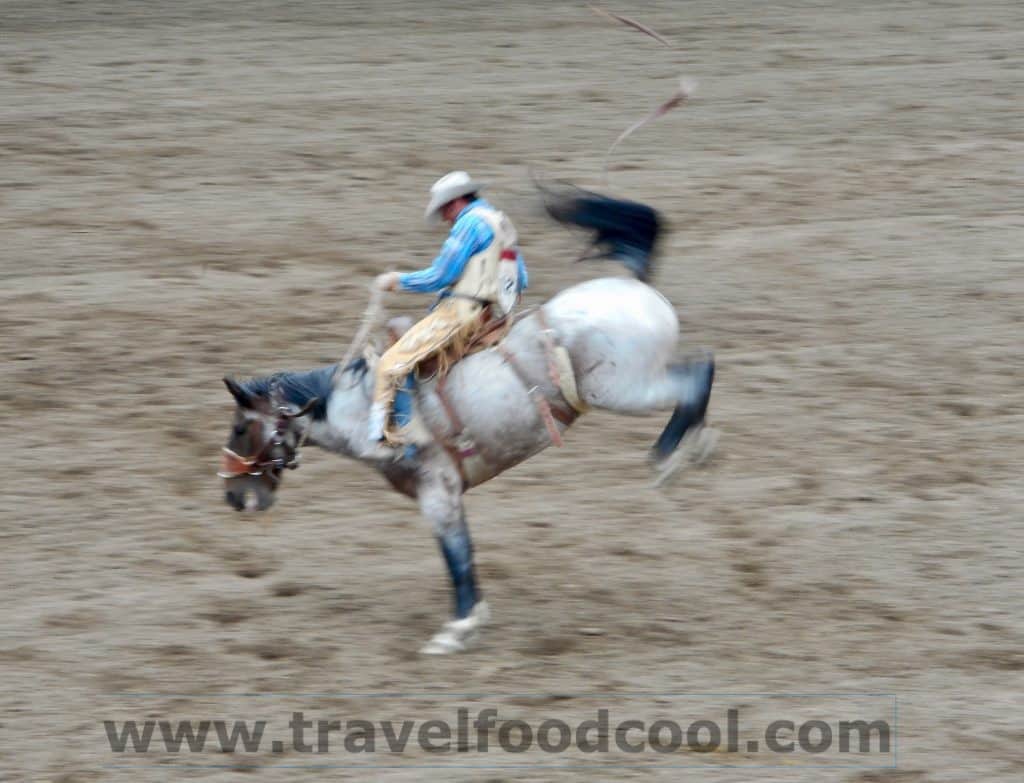
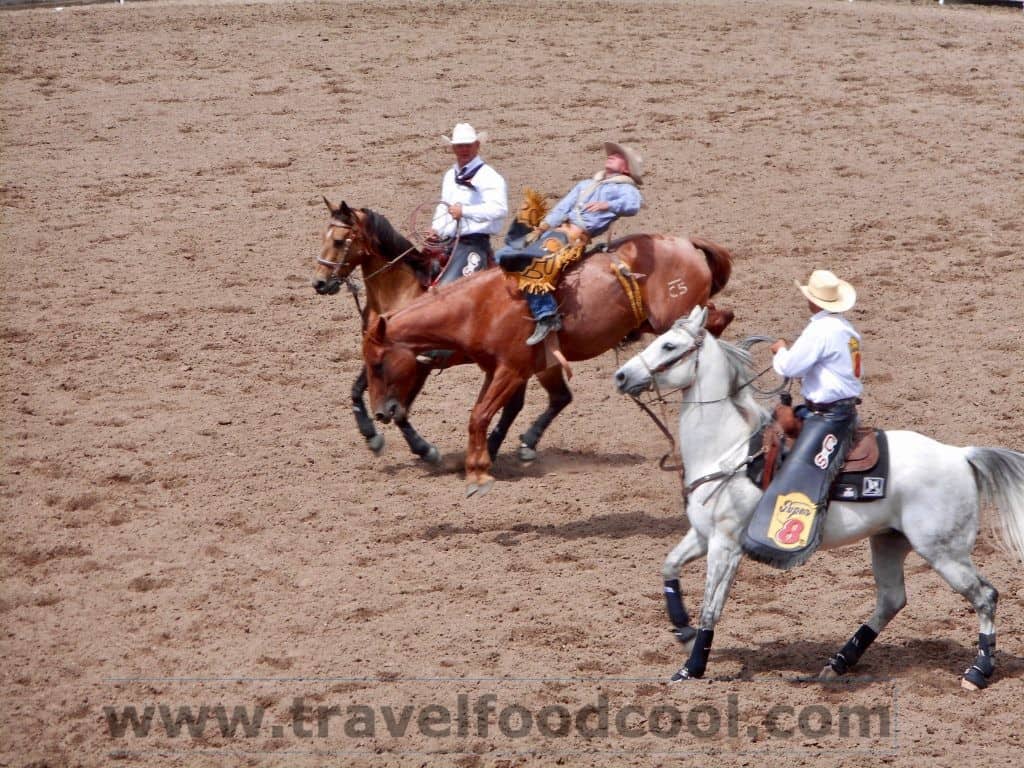
Barrel Racing: I like this event because it is the only one the cowgirls are allowed to compete in. The horse and rider work together and must circle three barrels in a cloverleaf pattern. This is a timed event and the winning cowgirl usually claims victory by fractions of a second. The rider can touch a barrel but it cannot be knocked over or 5 seconds get added to the score.
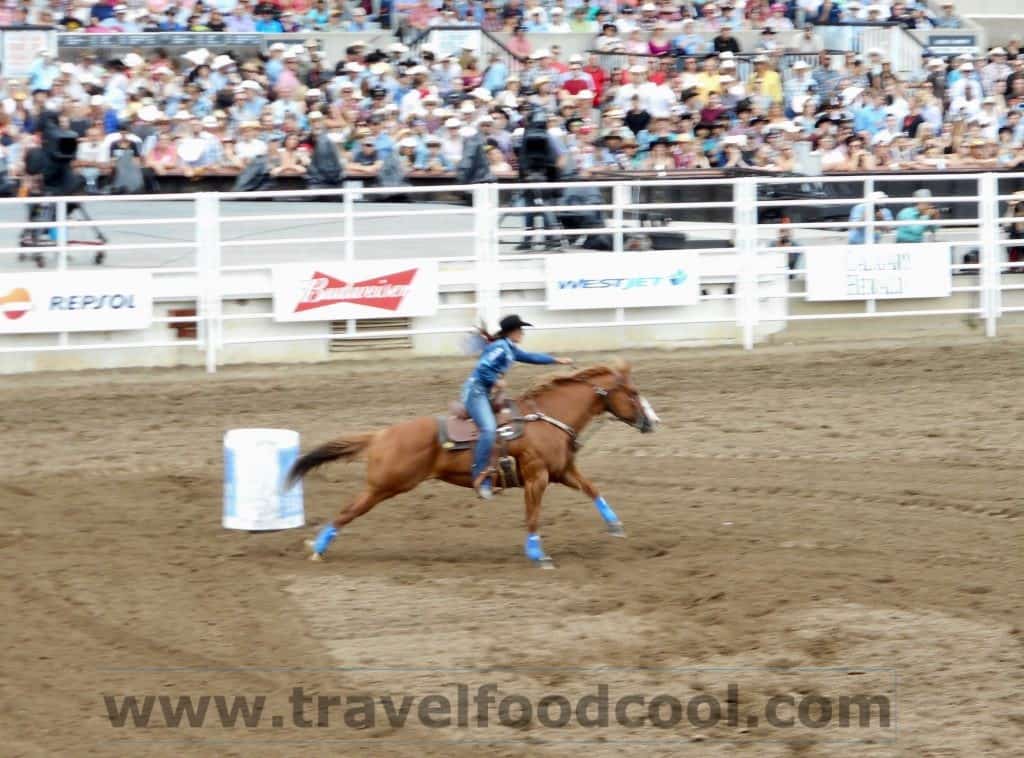
Bull Riding: This event must have been started by teenaged boys. Everytime I watch it, I think, “whoever came up with this idea was crazy”! The cowboy holds on for dear life to a thickly braided bullrope with handhold. This rope is wrapped around the bull and held taut by the bull rider. (The bullrope is weighed down by a cowbell which allows the rope to fall when the ride is over). The bullrider’s one arm has to stay bent (it cannot be straightened) and his other arm has to hold on. The cowboy has to stay on the bull for 8 seconds. If he wants to receive higher marks, he can spur the bull.
If you are with a group of people, I like to have everyone pick their winners and place bets for the different events. (You can cheer extra loud for your rider and hold your breath for the 8 seconds they have to stay on the bull!)
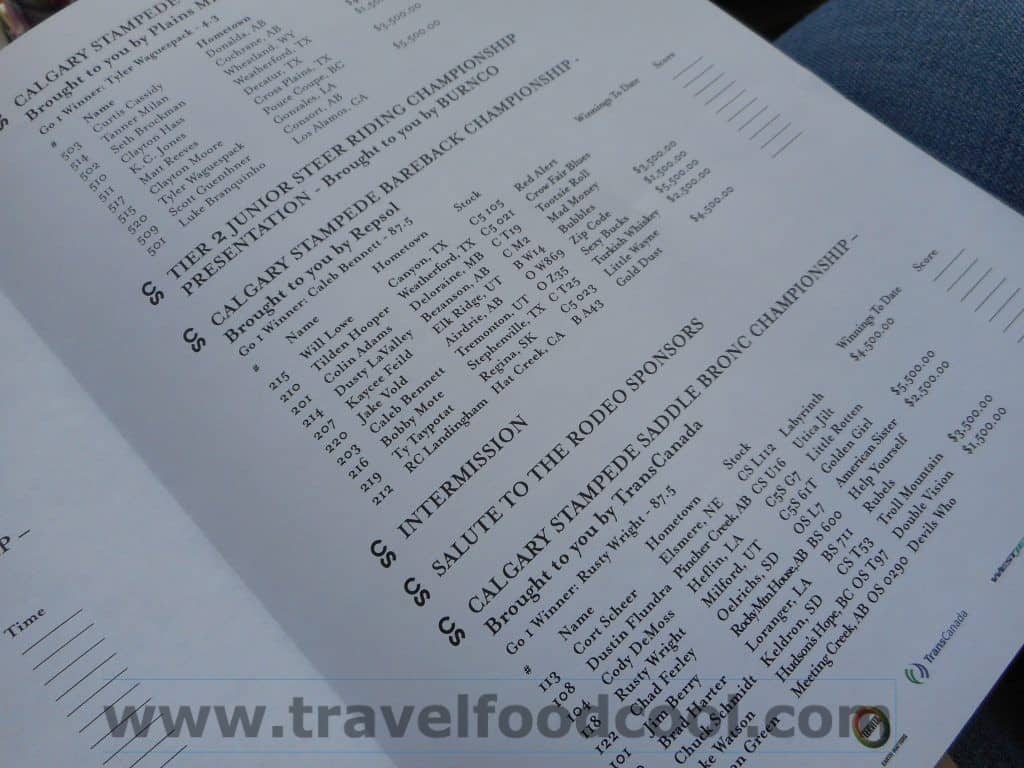
After the nail-biting excitement of the Bull Riding, a little levity is alway provided by way of the Wild Pony Ride. This is a junior event where a 3-person (male and female) team, must (at least one), mount and stay on the pony for at least 8 seconds. Easier said than done and the ponies always look like they take great joy in escaping from the kids!
The evening main events are the Chuckwagon races. Described as a “Half-Mile of Hell” as 36 drivers and 216 horses (supported by their outriders) compete in nine nightly heats to see who will win their share of the $1.15 million purse. This is a timed event and if the stove isn’t loaded, you will have an extra second added to your time. Don’t knock over a barrel or miss a barrel or you will add between 5 – 10 seconds to your final time!
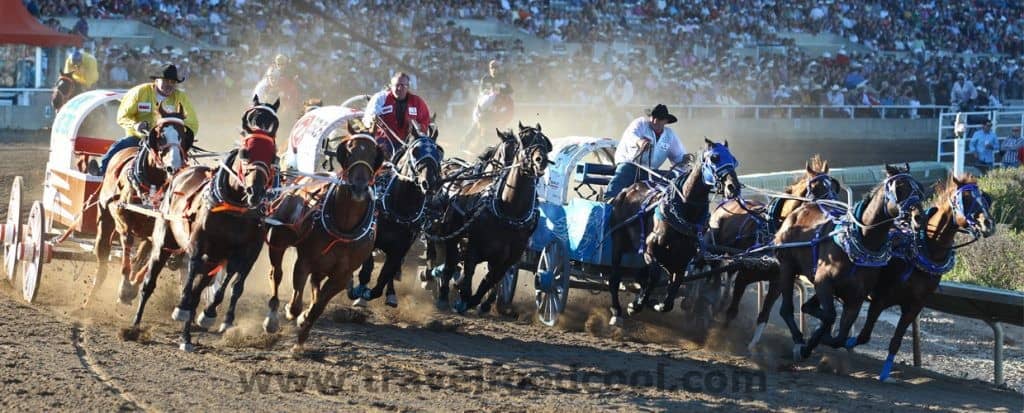
Interested in learning all the rules and penalties? Brush up on them here.
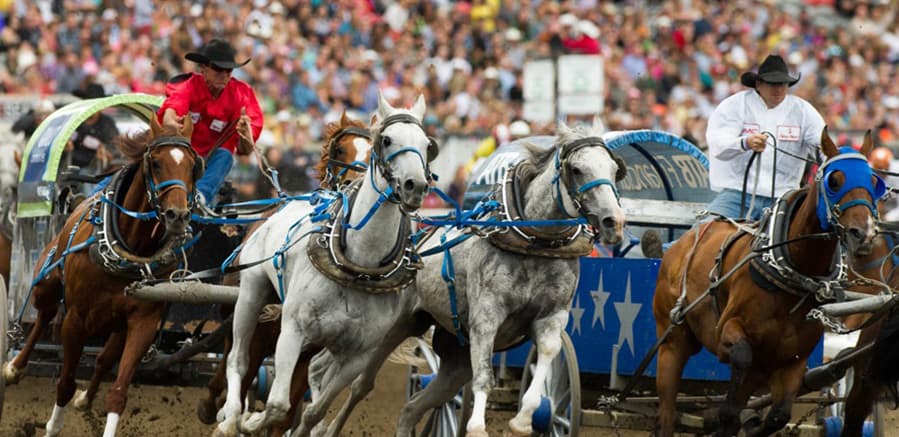
Stick around after the Chuckwagon races to be treated to a concert or show. There are concerts both paid (the Nashville North stage which showcases bigger name headliners) and free (at the Coca-Cola stage, usually local or up- and-coming performers) daily.
If you’re looking for a break from the food and noise, you can check out the family friendly Western Oasis and enjoy local music, art, crafts, food and wine selections in an oasis-like surrounding of beautiful plants and water features.
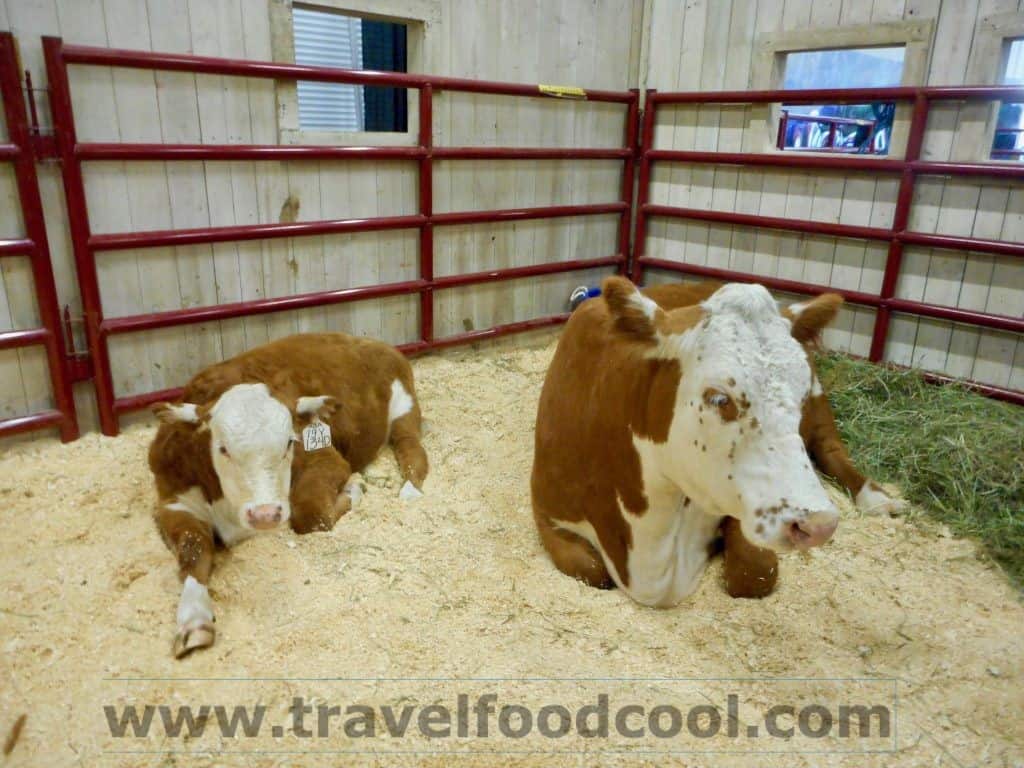
Keeping the agricultural roots of the original exhibition in mind, the Calgary Stampede still showcases livestock and agricultural events such as Aggie Days, Farm Safety, sheep herding, as well as a three-day international blacksmith competition. (I wonder if Biagiotti can brush up on their horseshoes?)
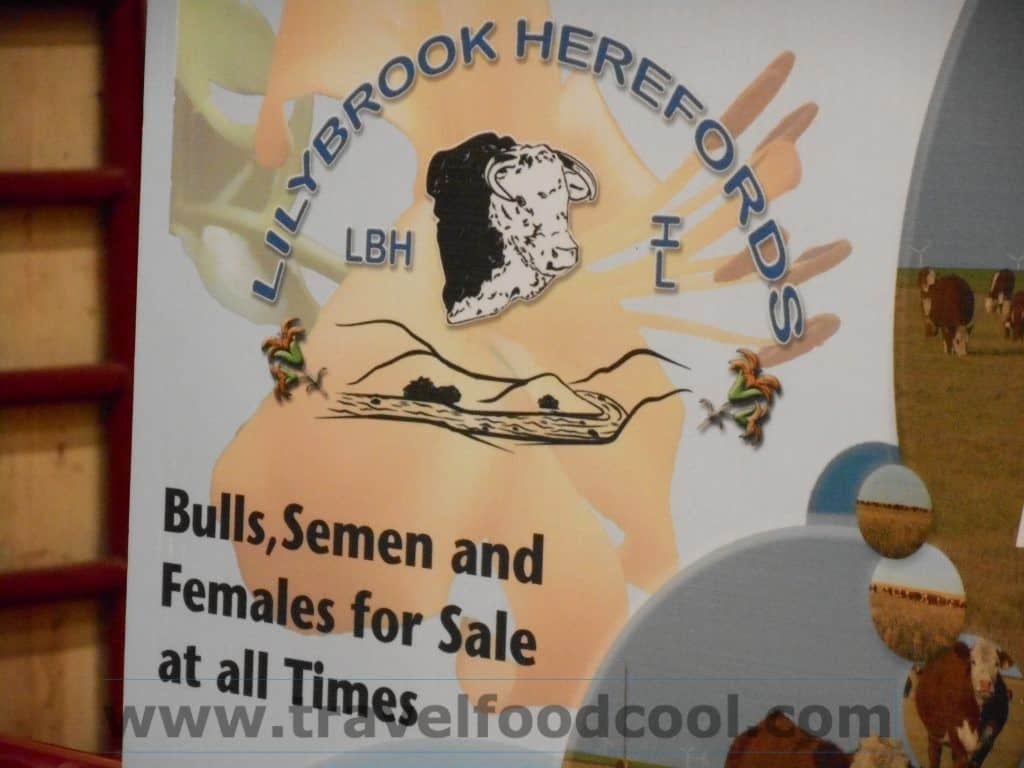
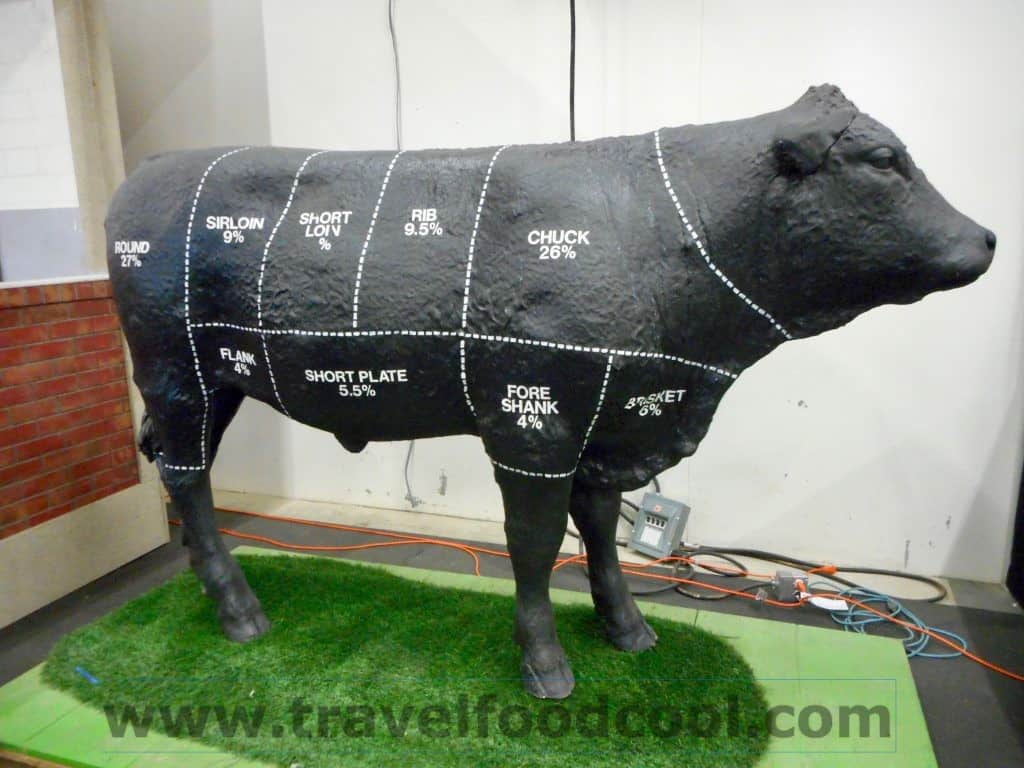
Feel like a cultural journey into the past, head over to Indian Village. Indian Village has been a major part of the Calgary Stampede since the start in 1912. Visitors can experience First Nations traditions and culture firsthand. “Indian Village has promoted and preserved the relationship between the Calgary Stampede and Treaty 7 families. The 26 tipis represent the five nations of Treaty 7: Kainai, Tsuut’ina, Stoney Nakoda, Siksika and Piikani. Each tipi has a unique design on the outside and beadwork, buckskin outfits and artifacts are displayed on the inside.”
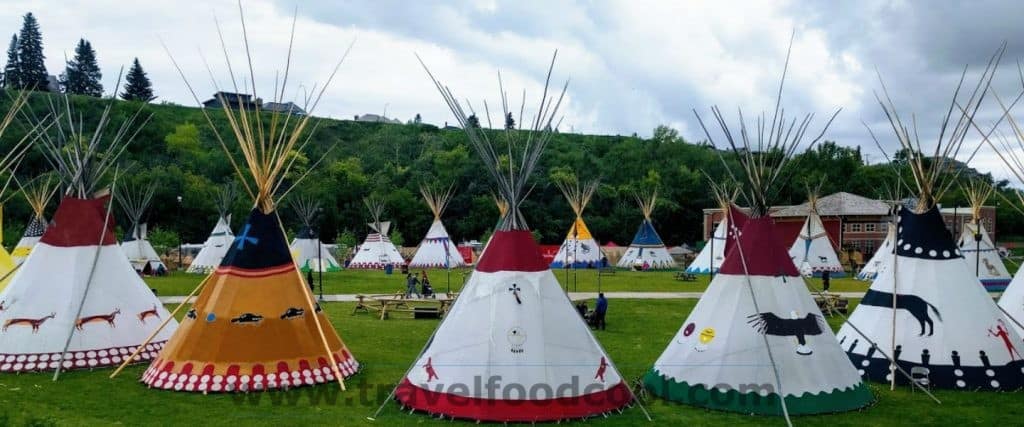
Rules for Stampeding!
- Wear cowboy boots (Roping boots are also allowed)
- Wear a cowboy hat
- Wear jeans and checked shirts (men and women); women can wear dresses
- Rest your liver at least one week in advance – there are a lot of cocktails consumed at the events!
- Prepare your pallet for some exotic food creations
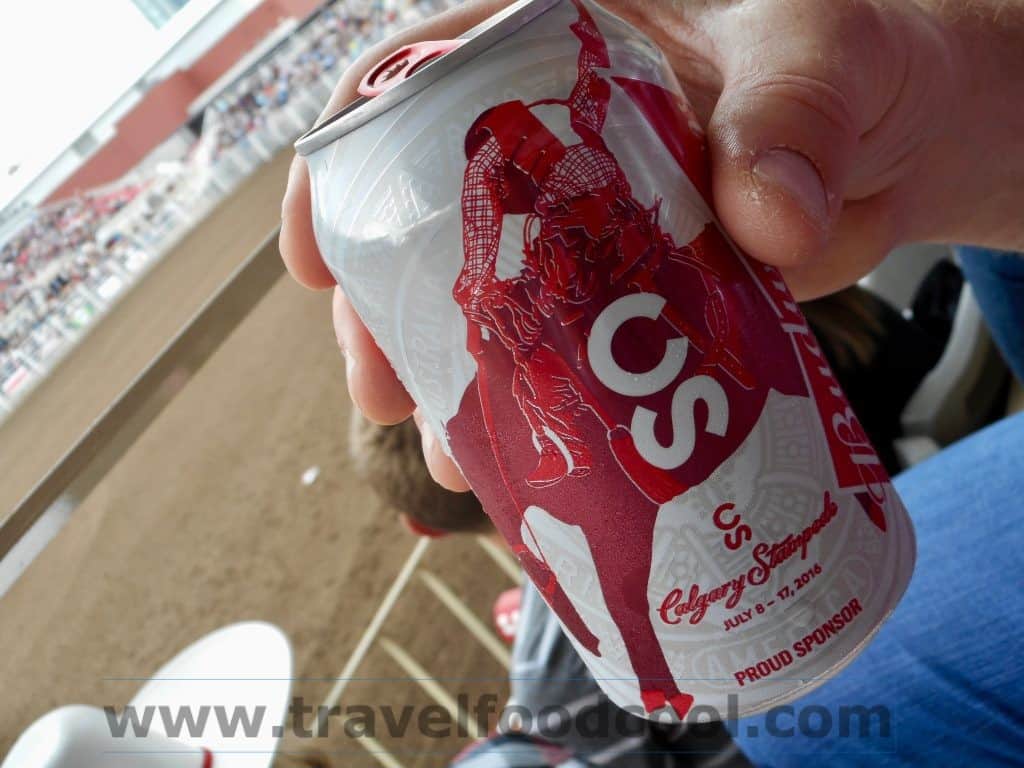
YAHOO!!!
(A tip of the hat to Travel*Food*Cool reader, Alison (thank you!) for telling me that Calgarians say “YAHOO!” and only newbies say “YEEHAW!”)


